Nakayama is in between Narita And Haneda International Airport
<クッキーについての同意並び欧州居住者向けプライバシーポリシー>
中山・下総・散歩道
Ryukisan Seitaiin Jokoji Temple
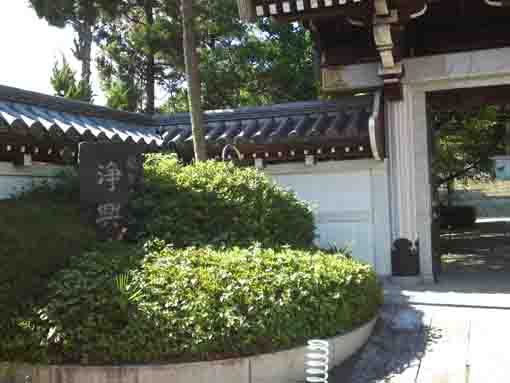



In the residential area near the Ferry at Imai along Edogawa River, there is Ryukisan Seitaiin Jokoji Temple. It has many cultural assets designated by Edogawaku with much green in the site.
Jokoji Temple belongs to Jodo Shu and it was introduced in Edo Meisho Zue (a guide book describing Edo in Edo period) so it has been deeply believed among people living in Edo since then. Its principle image is Amida Nyorai. In 1509 in Murochi Period, Saiokuken Socho, a famous renga poet, went down Sumidagawa River and got off the ferryboat at Imai. He visited Jokoji and created a beginning verse of a renga poem, 'Fuji no ne wa, To karanu yuki no senri kana'. The ferry at Imai had been here since Muromachi period and the poem implies that Mt. Fuji could be seen from the temple well at that time.
Moreover, Ujiyasu Hojo, the third generation of Hojo Family at Odawara, visited Jokoji Temple in 1564 of Sengoku Period and write a tanka poem 'Matsukaze no fuku oto kikeba yomosugara shrabe kotonaru ne koso wakaranu'. A big pine tree called 'Koto Hiki no Matsu' standing in front of the main hall was described in Edo Meisho Zue.
Ryukisan Seitaiin Jokoji Temple tells us the history of the ferry at Imai and the area around it. Why don't you visit Jokoji Temple?
The History of Ryukisan Seitaiin Jokoji Temple
Jokoji Temple
Jokoji Temple is entitled Ryukisan Seitaiin and belosngs to Jodo Shu. It was a branch temple of Zojoji Temple in Shiba Tokyo. The beginning of Jokoji Temple is that Gensei built a small shrine in 1266. During Koan Era (1276 - 87), Kishu Zenshi visited the shrine on the way to Komeiji in Shimousa from Komeiji Temple in Kamakura and a priest in Jokoji asked him to found it as a Buddhist temple.The Wooden Statues of Mr. Otsuka and Ms. Otsuka
The Otsuka Family was first settlers to reclaim lands in Imai Village in early Edo period. The sculptures might be carved in early Edo period and was registered as a cultural asset by Edogawaku.The Grave of Munezo Otsuka
Munezo Otsuka (-1822) contributed to plant pears in this area and so he began the plantation in late Edo period. His and his family's grave stones remain in Jokoji Temple are registered as historical assets by Edogawaku.The Monument of Shinkawa Nashi (Pear planted in Shnkawa)
A year passed after Munezo Otsuka had passed away, the monument was built in 1823. The Monument was registered as a cultural asset by Edogawaku.Fudekozuka (monuments for brushes to writing) for the venerable Rikiyo, Seiyo, Junyo and Juntei
Some chief priests in Jokoji Temple opened private school called Terakoya to contribute educating villagers in Edo period. All three monuments are oval shaped stone monuments that villagers who had learned a lot at their school built them and buried their writing brushes under the monuments.平成5年(1993)3月
江戸川区教育委員会
瀧亀山清泰院浄興寺門前案内板より
Shinkawa Nashi (Pears growing along Shinkawa River)
Around 1800, Munezo Otsuka began pears growing in the south side of Shinkawa River. He tried improving breeds several times, finally he got better pears and he presented them to Shogun in1821. The Shogun was satisfied at them, then, he could send his pears to the Shogun since then.His pears were very soft, sweet and crisp, so it had been as tasty as ever before. His pears were called 'Shinkawa Nashi' and it sold in Edo. The pear plantation had spread along Shinkawa River until a floods striked in 1917. The flood was so great that the pear plantation would decline after that.
A year passed after Munezo had passed away, his son Yoshitoyo built a stone tablet in his plantation in 1825.
Now this stone tablet stands in Jokoji Temple since there are graves of Otsuka Family.
March 2015 by Edogawaku
新川口児童遊園内案内板より
引用・抜粋および参考
瀧亀山清泰院浄興寺門前案内板
江戸川区東葛西 新川口児童遊園内案内板
江戸名所図会6 ちくま学芸文庫
The Location and Access to Ryukisan Seitaiin Jokoji Temple

The map to the noted spots near the remains of the Ferry at Imai
PDF of the map to the landmarks near the remains of the Ferry at Imai (Imai no watashi ato)Ryukisan Seitaiin Jokoji Temple
- Ryukisan Seitaiin Jokoji Temple has great accessibilities from both Narita and Haneda International Airport.
- From Narita International Airport, take Sobu Express Line bound to Tokyo or Yokosuka and get off at Funabashi Sta, then transfer the line to Sobu line bound to Nakano or Mitaka ang get off at Motoyawata Sta. Or take Keisei-line bound to Ueno and get off Keisei Yawata Sta. Both from Motoyawata Sta and Keisei Yawata Sta, transfer the line to Toei Shinjuku line and get off at Ichinoe or Mizue Sta.
- From Haneda International Airport, take Keikyu-line bound to Narita, and get off Shinagawa Sta and transfer the line to Sobu Express line bound to Narita International Airport or Chiba, and transfer the line at Ichikawa Sta to Sob line bound to Nishi Funabashi, Tsudanuma or Chiba and get off at Motoyawata Sta. Or take Keikyu-line bound to Narita, and get off Keisei Yawata Sta. Both from Motoyawata Sta and Keisei Yawata Sta, transfer the line to Toei Shinjuku line and get off at Ichinoe or Mizue Sta.
- From Akihabara Station, take Sobu line bound to Nishi Funabashi, Tsudanuma or Chiba and get off Motoyawata Sta. Then transfer the line to Toei Shinjuku Line and get off at Ichinoe or Mizue Sta.
- Take 14 minute walk from Mizue Sta Or take 16 minute walk from Ichinoe Sta.
- 3-22-5 Edogawa, Edogawaku, Tokyo
The Noted Spots near Jokoji and Edogawa River

Edogawa River
The short summary of Edogawa River.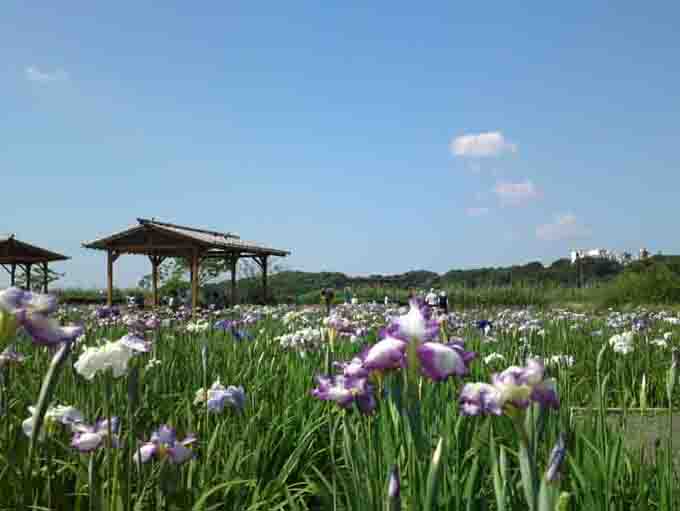
Koiwa Iris Garden and Sakura
Irises, Kawazu Sakura and many kinds of flowers blooming.
A Walk Around Mizumoto Park
People enjoy seeing the nature and culture in the areas.
Kasai Jinja Shrine
It has about 900 years history and dedicates Ieyasu Tokugawa.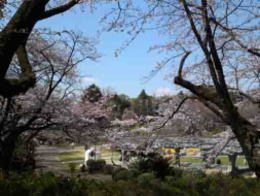
Noted Spots In Satomi Park Area
The park is the noted scenic spot to see cherry blossoms, roses and colored leaves with many historical heritages.
Zenyoji Temple
This temple is famous for Yoko no Matsu, a huge black pine tree designated as a National Natural Property.
Yagiri no Watashi (The Ferryboat starts at Yagiri)
It has been carrying people since Edo period.
Kokufu Jinja Shrine
It dedicates the Prince Takeru Yamato, one of the great hero in classic Japan.
Seiryusan Honzoji Temple
It connects to Maeda Family in Kaga and Mamasan Guhoji.
Gyotoku Kaido Highway
Musashi Miyamoto and Basho Matsuo had passed the road.
Shinozaki Park
It is a popular park with many trees, sakura and so on.
Edogawaku Shinozaki Pony Land
Visitors could see horses from the bank of Edogawa River.
Joyato Park (the night light park)
It was much flourished as one of the Eastern Gates of Edo in Edo period.
A Walk on Horie and Nekozane in Urayasu
There are some shadows of Edo in temples and shrines there.
The Remain Of The Ferry At Imai in Gyotoku
Ieyasu Tokugawa used this ferry when he went hawking.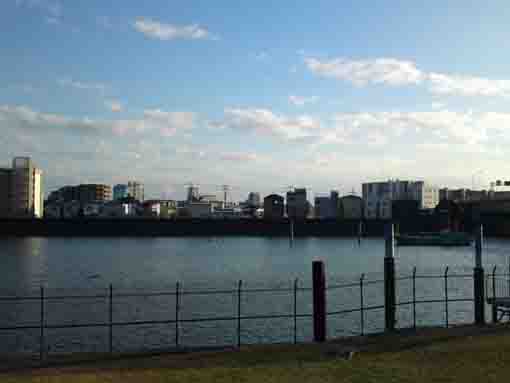
The Remain of the Ferry at Imai in Edogawaku
Socho first landed at Imai during his trip to Boso Peninsula.
Ryukisan Seitaiin Jokoji Temple
Jokoji is famous for connecting to a famous renga poet Socho and a sengoku daimyo Ujiyasu Hojo.
Furukawa Water Park
It is the first water park in Japan with Sakura in spring and hydrangeas in summer.
Shinkawa River in Edogawaku
It has some Edostyle Landmarks and thousands of Cherry Trees.
Along Shinnakagawa River
It has some wonderful seasonal views along this river.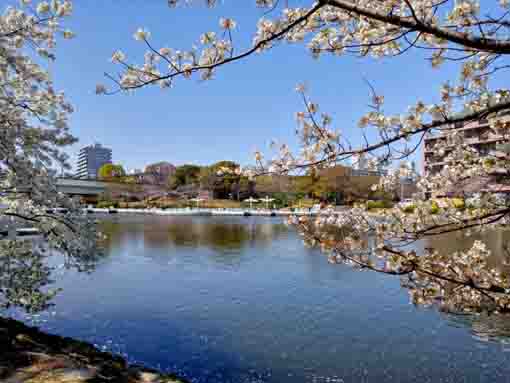
A Walk On Shinsakongawa Water Park
It is opened along Sakongawa River in Edogawaku.
Viewing Seasonal Flowers along Edogawa River
On the banks, many beautiful flowers blooming.- 広告 Advertisement -


